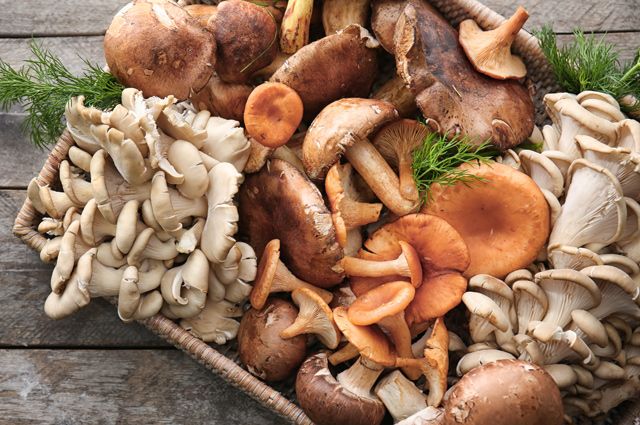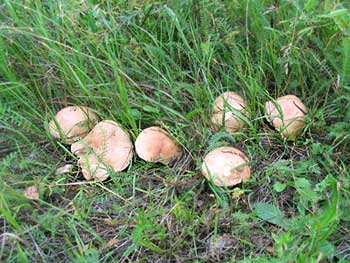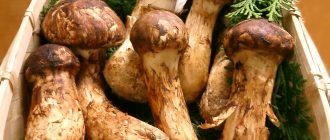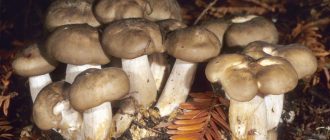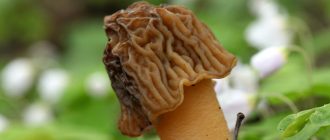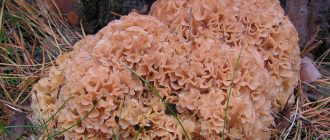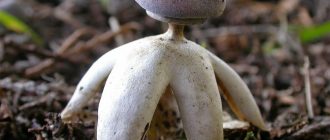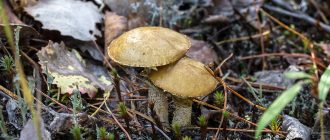Chemical composition, useful and harmful properties of mushrooms
The composition of mushrooms depends on the place in which they grew. The useful components of different types vary depending on the composition of the soil, weather conditions, and age. Young mushrooms contain most of the nutrients. It is not recommended to eat old specimens, since as they grow, they can accumulate a large amount of toxic substances.
A significant part of the body of a mushroom is water. Therefore, they are greatly reduced in size during heat treatment.
Chemical indicators of mushrooms
| Mushroom name |
Protein
100g |
Fats
100g |
Carbohydrates
100g |
Vitamins | Macro and microelements |
| Champignon | 4,3 | 1 | 0,1 | B1, B2, B6, B9, C, E, PP, choline, carotene | Co, Zn, Na, Mg, Mn, Ca, Fe |
| Chanterelles | 1,5 | 1 | 1 | A, B1, PP, C, E, D, B9, B2, B6, B5 | K, S, Cu, Fe, Ca, F, Mg, P, Na, Zn, Mn |
| Oyster mushrooms | 3,3 | 0,4 | 6,4 | B1, B5, B2, B9, B6, B12, C, PP, D, E | Cr, S, Cd, K, Mo, P, Br, Si, Na |
| Chaga | 2,1 | 0,8 | 1,2 | D, B1, B3, B2 | K, Zn, Br, Mn, Cu, Si, Fe, Co |
| Tea mushroom | 2,6 | 7,2 | C, A, E, B1, B2, B6, B12, PP, D | Zn, Ca, Mg | |
| Milk mushroom | 3 | 4,2 | A, B1, B2, B12, D, PP | Ca, Fe, Zn, I | |
| White | 3,7 | 1,7 | 1,1 | B1, B2, B5, B6, B9, C, D, E | K, Ca, Si, Mg, Al, Na, Cl, P |
| Honey mushrooms | 2,2 | 1,2 | 0,5 | B1, B2, B5, D, E, C, PP, B6, B9 | K, Ca, Si, Mg, S, Cl, P, Na, Al, Br, I |
| Shiitake | 2,2 | 0,5 | 6,8 | A, B1, B3, B2, B5, B6, C, D, K, E | K, Ca, Se, Zn, Mg, Na, P, Fe |
| Birch trees | 2,1 | 0,8 | 1,2 | C, E, PP, D, B1, B2 | Mg, Fe, K, Ca, Mn, P, Na |
| Russula | 1,7 | 0,7 | 1,5 | E, C, PP, B1, B2 | K, Na, Mg, Ca, P |
| Aspen boletus | 3,3 | 0,5 | 1,2 | C, E, PP, B1, B2 | Na, Fe, K, P, Ca, Mg |
| Mushroom name | Acids | Calorie content (in fresh mushrooms) 100g / kcal | |||
| Champignon | linoleic, oleic, palmitic acids, Omega-6 | 27 | |||
| Chanterelles | nicotinic, myristic, folic, pantothenic acid, omega-6 | 19 | |||
| Oyster mushrooms | pantothenic, nicotine, folic, Omega-6, Omega-9, Omega-3, Omega-11 | 33 | |||
| Chaga | vanilla, oxalic, oil, formic, acetic | 20 | |||
| Tea mushroom | acetic, apple, lemon, oxalic, grape, dairy | 28 | |||
| Milk mushroom | nicotine, folic | 43 | |||
| White | Omega-6, caprylic, lauric, Omega-3, palmitic, behenic, Omega-11, Omega-9, Omega-5 | 34 | |||
| Honey mushrooms | Omega-3, Omega-6, Omega-11, Omega-9, Omega-7, caprylic, stearic, arachidic | 17 | |||
| Shiitake | aspartic, glutamic, stearic, capric, Omega-6, Omega-3, Omega-9 | 34 | |||
| Birch trees | Omega-6, Omega-9, myristic, palmitic, linoleic | 20 | |||
| Russula | Omega-6, Omega-9, stearic, myristic, linolenic | 15 | |||
| Aspen boletus | linolenic, stearic, myristic, omega-9 | 22 |
Important! Champignons are low in calories and are a good dietary product. But despite this, they quickly create a feeling of satiety.
They can even be eaten raw.
The benefit of champignons is that these mushrooms contain substances that have a beneficial effect on maintaining a stable hemoglobin index in the blood, the work of the cardiovascular system, improving the functioning of the gastrointestinal tract, etc.
Harvesting mushrooms for the winter - proven recipes
Pickling is one of the most common methods of harvesting mushrooms for the winter. There are thousands of recipes for canning this product. Here are some reliable methods of pickling well-known and useful mushrooms - honey agarics and chanterelles, tested by experienced mushroom growers.
Pickled mushrooms
For this recipe, you need as many honey mushrooms as will fit in a 5 liter saucepan.

Food preparation:
- Wash the mushrooms and cut into small pieces.
- Pour boiling water over them and cook for 10 minutes.
- Drain and cook again for 10 minutes.
- Drain the hot water and rinse the mushrooms with cold water in a colander.
- Pour boiling water over, put on the stove and wait until the mushrooms sink to the bottom.
- Rinse under running water.
Cooking the marinade
Pour 1 liter of boiling water into a 5 liter saucepan. Add 2 tbsp. salt without a slide, 10 allspice peas, 2 pcs. bay leaf, 1 tbsp. Sahara. Stir and pour mushrooms into the liquid. Put on the stove to cook.
After boiling, pour 1 tsp. vinegar essence and 10 cloves of garlic. After that, the pan can be removed from the heat and the mushrooms can be placed in jars, adding hot sunflower oil (2-3 tablespoons per 700 ml) and closed with a plastic lid. After cooling, put in a cool place. Pickled mushrooms will be ready in 2 weeks.
Pickled chanterelles
To prepare pickled chanterelles according to this recipe, you need 1.5 kg of mushrooms. Before starting the canning process itself, the chanterelles need to be soaked in water for two hours and rinsed several times. Then pour cold water, add 1 tablespoon of salt and boil for 15 minutes. Boiled chanterelles must be transferred to a colander and rinsed with cold water.

Chanterelles are pickled as follows:
- Pour 1 liter of water into a saucepan.
- Add 2 tbsp each. sugar and salt, a few laurel leaves, 10-15 pcs. allspice and black pepper, a little horseradish, 10 cloves of garlic, cloves, dill.
- Boil until the free-flowing ingredients dissolve.
- Pour 2 tsp. vinegar essence.
- Pour chanterelles into the marinade and simmer for 15–20 minutes.
- Remove saucepan from heat and let cool liquid.
- Pour the marinade with mushrooms into jars and close with screw or nylon lids.
The finished product should be stored in a cellar or refrigerator.
Interesting! 100 g of cherries contain a daily dose of potassium, which is necessary for the contraction of skeletal muscles. Another benefit of oyster mushrooms is the ability to reduce the amount of cholesterol in the blood. Harm - they can accumulate the toxic element cadmium.
In the vastness of the Runet, you can find a huge amount of information about the benefits and dangers of mushrooms for the human body. Most of them create a false impression about this product. They certainly contain components that are useful for the human body. But, according to nutritionists, in dishes they should only serve as an additional ingredient.
Delicious recipes
We bring to your attention several recipes for mushroom snacks that will not leave you indifferent. Fried chanterelles
Prepare:
- fresh chanterelles 1 kg;
- vegetable oil 120 ml;
- bay leaf with several leaves;
- salt.
Start cooking:
- Rinse the chanterelles, cut them into pieces. You can fry them in both vegetable and butter. You can use interior fat or a mixture of fats for this. Roast them for 40 minutes. Do not add fire. Be sure to cover with a lid.
- Remove the lids, add salt, bay leaf. Continue frying over low heat until the juice evaporates and the mushrooms themselves acquire a golden brown crust.
- Send them to hot jars, add oil to the top so that it covers them by 1 cm.
- Sterilize jars in salt water for 1 hour). Roll up, turn over onto the lids. Wrap with a blanket or blanket and leave as it is until it cools completely.
- After 48 hours, you can move the container to a dark place.
Mushrooms

Mushrooms should never be picked.
It is necessary to pay attention not only to the external signs of mushrooms, but also to the place where they grow. If the undercover is thick, there is little chance of getting a basket full.
And from the neighboring trees, you can determine which varieties will be characteristic of this area.
Then next time it will be easier to navigate the collection process.
Where is it better to pick mushrooms and at what time

Clothing should be comfortable and allow movement
A hike for a mushroom harvest will be effective if you immediately decide which forest to go to. The advice of experienced mushroom pickers will help to understand this issue:
- The pine forest is a habitat for porcini mushrooms, chanterelles and little waves. There are also forest mushrooms and ryadovki.
- The alder forest is rich in mushrooms and russula.
- There will be a lot of milk mushrooms and porcini mushrooms in the oak forest.
- In the aspen forest, you can collect aspen mushrooms, honey agarics or oyster mushrooms.
- In the vicinity of deciduous trees, mushrooms or boletus grow well.
It is better to go for mushrooms at dawn. At this time it is still cool and the mushrooms are dense and strong. And by noon, when it gets hot, they become limp, become looser. A good harvest can be harvested in the middle of summer, at the end of August or in September.
The most common mushrooms - varieties, their harm and benefits
Some varieties have properties similar to beef.The daily norm of meat can be replaced by 150 g of "red" mushrooms.
These mushrooms include:
- aspen mushrooms;
- russula;
- waves.
These mushrooms are easy to digest. They are free of starch and cholesterol. They are saturated with zinc, vitamins B and D. But even the most useful mushrooms can simultaneously have harmful properties. This must be taken into account when collecting them.
Table: The benefits and harms of some mushrooms
| Name | Positive characteristics | Than dangerous |
| Porcini mushrooms (boletus) | Promote the strengthening of immunity, normalize the condition of hair and nails, prevent the development of oncology | Activate the production of gastric juice |
| Aspen boletus | Improve blood composition, help restore the body in the postoperative period | Exert stress on the liver and kidneys |
| Ryzhiki | Natural antibiotics, a source of calcium and iron, improve metabolism | High in calories |
| Milk mushrooms | Prevents the development of kidney stones, cleanses the lungs | May cause allergies |
What mushrooms are not subject to collection

The harvest of mushrooms will delight the most diligent mushroom pickers
Not all mushrooms are suitable for human consumption. You cannot collect the following ones:
- Growing next to a road, landfill or factories.
- Wormy and old specimens.
- Inedible species - gall or pepper mushrooms. They are not hazardous to health, but they have a pungent smell and taste unpleasant.
- Poisonous - fly agaric, pale toadstools.
- False doubles of edible mushrooms.
After collecting the mushrooms, be sure to sort it out. If there is at least one poisonous mushroom in the basket, its particles can stick to neighboring mushrooms. Then they will have to be thrown out all so as not to suffer from poisoning.
How to cut a mushroom without damaging the mycelium and why is it needed
The mushrooms are cut as follows:
- For mushrooms growing on trees, only the caps are cut.
- The rest of the species are cut along with the leg, leaving its root part intact.
- When the mushroom grows out of the moss, it is pruned to ground level.
If you do not pull out a mushroom or a whole family along with the roots, the mycelium will hardly suffer and will quickly recover. Then next year there will be a new harvest in this place.
Advice to mushroom pickers for picking mushrooms.
- Never try raw mushrooms in the forest.
- Do not put unfamiliar and unfamiliar mushrooms in the basket.
- Do not use mushrooms that have a tuberous thickening at the base of the stem, covered with a torn membrane.
- Experienced mushroom pickers do not pick overgrown old mushrooms. Many toxic substances have accumulated in such mushrooms.
- Mushrooms are best picked in light rain or high humidity. In heat and drought, toxins accumulate very quickly in mushrooms.
- Avoid picking mushrooms near highways or cities. In such places, mushrooms are literally saturated with exhaust gases and other poisonous waste of our life.
- Do not knock down mushrooms that you do not need. In the forest, they will be useful to someone. Do not forget - you are just a guest in the forest.
Tips for mushroom pickers on the storage of mushrooms.
- It is not advisable to store fresh mushrooms for more than four hours. Do not leave untreated mushrooms overnight.
- If you do not have time to process fresh mushrooms, then put them in a saucepan and refrigerate. Do not cover the pot with a lid. You can keep fresh mushrooms in the refrigerator for no more than a day.
- Remember that mushrooms picked in the rain go bad very quickly.
- Mushrooms should not be kept in galvanized buckets.
- Don't keep salted mushrooms warm, but don't freeze them either! Otherwise, they will darken. If the salted mushrooms are moldy on top, they must be sorted out and washed. Then fill with new brine.
- The optimum temperature for storing salted and pickled mushrooms is from four to ten degrees. In warm or cold weather, mushrooms sour, become soft.
- Dried mushrooms should not be stored for several years: their pleasant taste will disappear.
- Dried mushrooms are convenient to keep in a tightly sealed container. In the open air, their aromatic smell quickly disappears.
- If dry mushrooms have crumbled, which often happens, then mushroom broth can be prepared from such a powder.
Tips for mushroom pickers when processing mushrooms.
- It is useful to put mushrooms cleaned of large debris in cold and salted water for about thirty minutes and then rinse. Small leaves and grains of sand adhering to the fruit bodies will lag behind the mushrooms.
- Experienced mushroom pickers boil all types of russula before cooking.
- If you pour boiling water over the russula, you can easily remove the skin from the cap.
- It is necessary to remove the skin from the cap from the oil.
- If there were aging mushrooms in the basket, then the bottom layer of the cap should always be removed from them.
- Legs and caps of boletus are dried separately.
- When drying boletus and boletus boletus, they are cut lengthwise into two halves.
- It is believed that all mushrooms are suitable for salting, but mushroom pickers only salted lamellar ones. All tubular mushrooms become soft and flabby after salting.
Andrey Pavlov, blog author.
What you need to know about chanterelles?
The most profitable hunting is July. It is in this month that such mushrooms as chanterelles grow in the forests. Such mushrooms always look very tasty and appetizing, besides, they are very healthy. A pleasant bonus is that they will not be remembered in any way, so you can put them in a regular bucket and not be afraid.

Now let's answer the next question - where do people gather chanterelle mushrooms? Such mushrooms almost always grow in several pieces. So, if you find one thing - do not pass by. They grow in mixed and coniferous forest. Experienced mushroom pickers know they can be found under leaves or moss.

The fact is that chanterelles love shade, which is why they grow near trees. They are rarely found in open areas, but there are exceptions. So, if it rains often, then you can check the open meadow. Several pieces can be found for sure.

What is more useful for food - a hat or a leg?
In mushroom caps, as a rule, there is more water, minerals, proteins, fats. They are more high in calories than legs. With age, the protein content in the caps decreases, while the amount of fat increases.
The mushroom legs contain more chitin. Chitin is a polysaccharide. A person does not have enzymes that could break it down. Therefore, the legs are more difficult for the human digestive system to digest. But this does not mean that they should not be eaten.
Research by specialists has shown that young hats are energetically more valuable than mature and old ones. When comparing legs and hats, it is recommended to eat young hats.
Before preparing a dish of mushrooms, nutritionists recommend that you first prepare them and make them safer and more digestible.
For this it is recommended:
- Soak them in water for several hours.
- Boil (drain the water several times and rinse the product under running water).
- Grind.
Doctors do not recommend preparing dishes from mature and old fruit chalk.
Important! Dried mushrooms are easier to digest than fresh ones.
Mushroom picking methods
Where to start looking for mushrooms: from the outskirts or go straight into the forest? Following the well-known proverb: "They look for mushrooms - they roam the forest", most inexperienced mushroom pickers rush into the depths of the forest. An experienced mushroom picker will start from the edge.
In forest plantations, it is advisable to use the "comb" and "comb with a ledge" methods to search for mushrooms. "Comb" is a route that resembles a comb with teeth of equal length. The “ridged comb” has teeth of different sizes.
On the edge and along the forest road, mushroom picking can be done using the "wave", "zigzag" or "stretched spring" methods.
It is advisable to try these methods first. If at least one of them gives a positive result, you can start a detailed search by making the “wave”, “zigzag” or “spring coils” more compressed so as not to miss the mushrooms. With the "unwinding spiral" one should stand approximately in the center of the clearing and go around it in ever-increasing concentric circles.In the case of a "twisting spiral", the route begins with a survey of the forest edge and ends in the center of the meadow.
If a detachment of pickers is sent to the forest, you should outline the directions in advance and choose ways to search for mushrooms. It is best to split in pairs to easily exchange information without interfering with each other. Exploring the edge of the forest or the strip along the road, one mushroom picker follows the course of the "stretched spring", the other - in a "zigzag" or "wave", sometimes going deep into the forest.
In the clearing, functions are also distributed: one examines the central part of the clearing, the other - its outskirts. A detachment, split in pairs, forms a chain in which each person is connected with two more. This will allow you to avoid wandering through the forest and keep each other in sight.
| Unrolling spiral | Twisting spiral | Comb |
|---|---|---|
| Wave | Zigzag | Stretched spring |
The width of the scanned strip changes all the time when searching for mushrooms. With a general survey of the area, it is quite significant, with a detailed examination, it narrows to the width of the mushroom picker's shoulders. Bright mushrooms, mushrooms on a high leg, mushroom families are immediately striking. But many of them disguise themselves as the color of fallen leaves, hiding in the grass, under bushes, brushwood or forest floor.
A mushroom picker, walking at a speed of 90 steps per minute, looks through a strip only 1–1.5 m wide. When the speed decreases to 60 steps, the viewing area reaches 3 m. % of its area. Two people picking mushrooms in one basket are more efficient. You can also collect in your basket, and if you are lucky, call each other. In this case, the collection increases not by 2, as it would seem at first glance, but by 2.3–2.5 times. Further cooperation does not give a positive result. Therefore, when collecting mushrooms with a whole detachment, it is recommended that the collector interact only with his neighbors, and in total, each will be included in two triplets. Excessive shouting, "hacking" unnecessarily confusing, creating unnecessary fuss and preventing the leader from keeping everyone in sight.
You have found a mushroom. He can grow alone, especially at the beginning of the season. But then the filaments of the mycelium begin to radiate outward and give new fruiting bodies. It is no coincidence that the people say: "The mushroom loves a couple." It's early to leave a good place. Place a "lighthouse" (stick, dry branch) near the first mushroom and start exploring the area using the "unwinding spiral" method.
The mushroom picking techniques described above are very approximate, because mushroom places are very different. For an experienced mushroom picker, the best assistant is personal experience. But for novice mushroom pickers, the examples given may be useful.
Security code for mushroom picking
It is best to learn how to recognize mushrooms from a specialist in the field. There are many differences between individual mushrooms, even in what kind of fungus it is at different stages of development and under different growing conditions.
Study the most dangerous venomous species and be confident in your identification. There are relatively few truly dangerous species. If you know and avoid them, then you should not be able to harm yourself in any way.
The key to not poisoning yourself is good identification. Make absolutely sure what you eat before you cook it. Check for all relevant signs of an edible mushroom and discard any mushrooms that don't match all of them. If you have any doubts, don't eat it!
Don't assume that all the mushrooms you find together are of the same species; different types can be found together.
Do not pick old or moldy mushrooms. Even if they are edible species.
As with any food you collect, avoid collecting in polluted or industrial areas. Fungi tend to absorb heavy metals from their environment.
Sort your mushroom collection as soon as you get home and double check it matches. Now you have time and you are comfortable. Take this last opportunity to drop anything you are unsure or in doubt about.
If you think you or someone you know has been affected by mushroom poisoning, seek medical attention.

2.
These are sellers in the markets, grandmothers, neighbors, users of local forums. Check out which of your friends had a mushroom on Instagram last year. Do not think that if everything has already been collected in one place, then you will not get anything. The mushroom holder will not run away anywhere, and in a week the mushroom has time to appear, grow and grow old. Enough for you.
Get up early
So, the rains have passed, there is still a good "plus" on the thermometer, it's time to go to the forest. You need to get up very early on a mushroom hike for several reasons.
Firstly, it is better to walk in the forest in the outfit of a mushroom picker before the onset of heat. Secondly, mushrooms shining with dew are better seen in the grass and leaves. Thirdly, it is better to go to popular places in the front rows, so that by your arrival there are no legs left from the mushrooms.
Preparing equipment
Shoes must be good. The sole should be tight so that you can not be afraid of sharp knots. Running shoes with membranes, meshes and ventilation will allow moisture to pass through very quickly if it has been raining recently or the morning dew has not yet dried.
It is imperative to take a hat with you, simply because this is an important rule of walking in the forest. The rest of the clothes are selected according to the weather and the situation
The better you cover your body, the less you will encounter insects, sharp branches and other delights of nature.
Take a knife with you to cut mushrooms. By the way, it is not at all necessary to cut them off, so as not to damage the mycelium. It's just more convenient: you won't accidentally break the leg and ruin the mushroom.
You will also need a knife to get yourself a stick. Seriously, if you do not walk in the forest, namely, look for mushrooms, you will need a stick to rake the leaves without bending over to the ground every time. If you don't want to train with inclines, you have to walk like Gandalf with a magic staff.
You need to take more water and do not forget about it, constantly monitor the flow of fluid into the body, if you do not want to pay for a walk with a headache from dehydration.
How should you pick mushrooms?
Firstly, the search for mushrooms is not a race and you need to walk slowly, stop and look around. Mushrooms can be difficult to spot at the best of times without actually stopping to look. Beginners are especially bad at seeing even what's right in front of them until they learn to see. ”Your approach to searching can be random wandering or systematic scanning, depending on your personality or the openness of the land you're looking for.
When you first start picking mushrooms, it is usually best to limit yourself to a few common and easily recognizable species. As you become more confident in them, gradually expand your list of finding and collecting mushrooms. If possible, your first trips should be with a more experienced mushroom picker who can show you mushrooms and teach you how to recognize them. There are many mushroom raids organized by local mushroom picking groups, which are a good starting point for your hunt. There are also commercial courses where you pay to attend and receive expert training in mushroom picking.
So, you have discovered a fungus. Now you have to decide if it is edible. Use your field guide and systematically check all the characteristics of the mushroom. If they all match the descriptions of the mushroom on your list, well done, put it in your shopping cart. You may consider taking those you are unsure about and taking a closer look when you get home, but keep them separate from your main collection.
With your mushrooms it will be safe in your basket if your search and collection of mushrooms is done very carefully in the immediate vicinity for others. Many species grow in clusters or rings, so others can be nearby
Even if you don't find anything in the immediate vicinity, still pay close attention to the area around where you made your find. You found one mushroom that liked the conditions there, others could also be near
Photo tips where to pick mushrooms



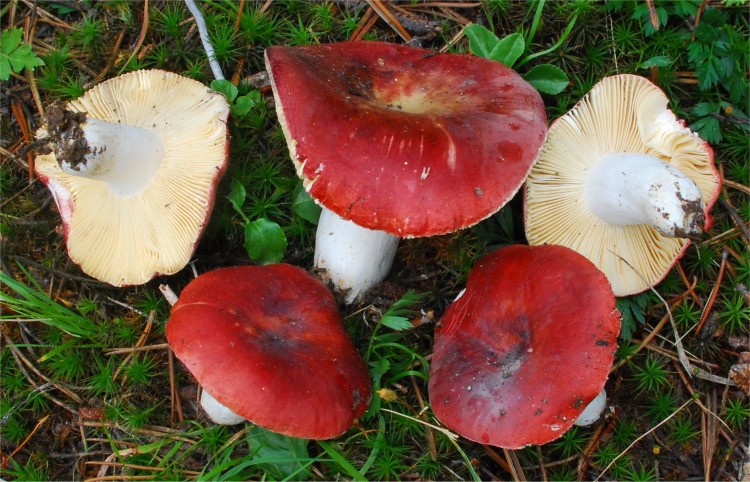










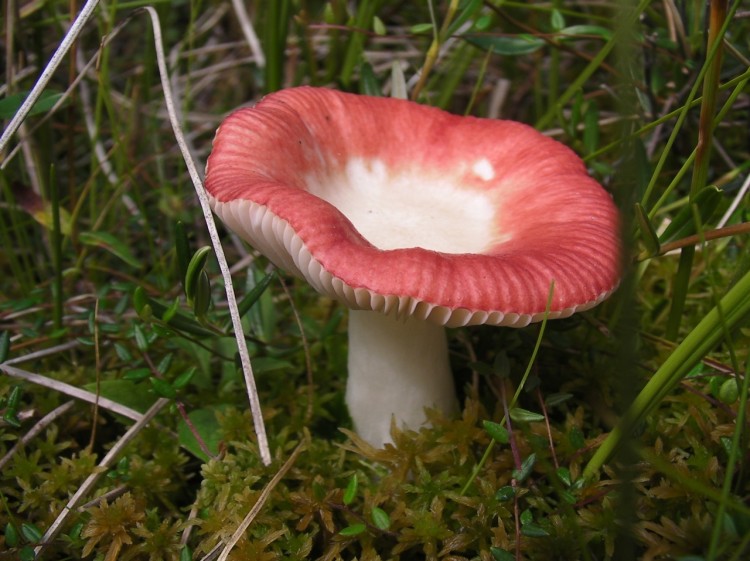


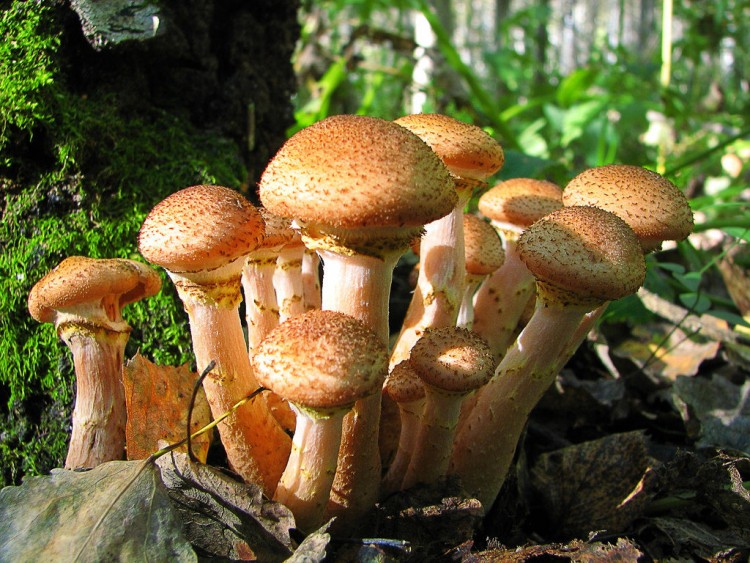







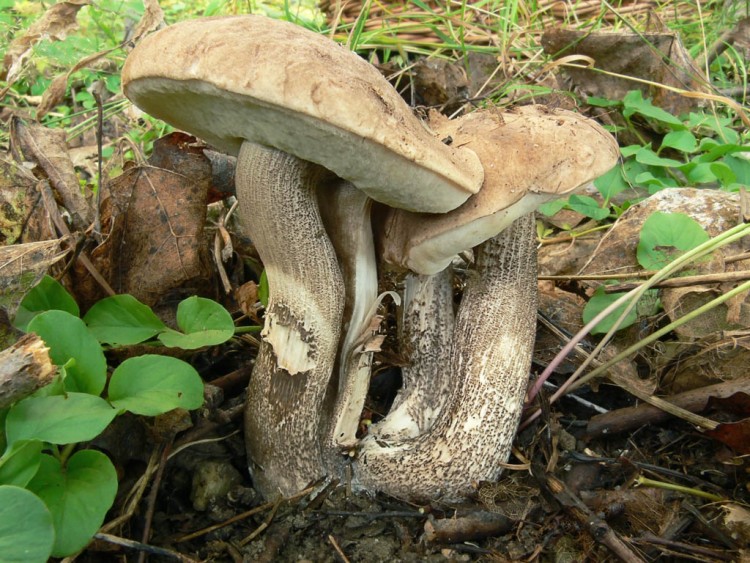











We also recommend viewing:
- How to store mushrooms
- Growing honey agaric
- Home mycelium
- Honey mushrooms at home
- How to grow a truffle
- What honey mushrooms look like
- Home oyster mushrooms
- Mushrooms at home
- Growing oyster mushrooms
- Porcini mushrooms at home
- White mushroom
- Mushroom black truffle
- Champignon mycelium
- Champignons at home
- Oyster mushrooms
- How to grow kombucha at home
- How to grow oyster mushrooms
- How to grow mushrooms
- Where truffles grow
- Types of mushrooms
- Champignon mushrooms
- Growing champignons
- Mushroom truffle
- Cultivation of porcini mushrooms
about healthy and tasty mushrooms
I am sure that there are no people who doubt the benefits of mushrooms for our body, healers have used the gifts of forests for a long time to get rid of many diseases. Having prepared an extract of boletus, or white fungus, they treated frostbite and very successfully, infusion of chanterelle mushrooms relieved people of boils, infusion of morels was used to treat loose nerves, and boletus was used to treat headaches.

Mushrooms are a wonderful source of proteins, and some mushrooms, with their nutritional properties, are no worse than veal - after all, one hundred and fifty grams of dry mushrooms will fully fill the body's daily need for meat products. The fact that fresh mushrooms contain almost ninety percent of water, refers to them to low-calorie foods. In addition, neither starch nor cholesterol was found in the pulp of the mushrooms - about healthy and tasty mushrooms.

There is enough potassium in mushrooms, which helps to get rid of edema, moreover, mushrooms in the diet, contribute to the normalization of metabolism, and all taken together, leads to a decrease in body weight, or to the desired weight loss for many. Scientists have identified another valuable feature of mushrooms - stimulation of the body's immune system, and with the constant use of mushrooms in food, you can prevent many vascular and heart diseases and prevent the formation of malignant tumors. Mushrooms are also rich in selenium, which only a few vegetables and fruits have, and zinc , in considerable quantities and B-group vitamins, classifies mushrooms as nutritious and medicinal for the nervous system, helping to avoid unnecessary emotional disorders and depletion of the nervous system.

Mushrooms are also rich in calciferol, which helps to strengthen the skeletal system, hair with marigolds and teeth, however, the most valuable in the above, experts consider porcini mushrooms, or boletus, boletus with mushrooms, boletus with boletus, boletus, milk mushrooms are no less useful and chanterelles, as well as russula, honey agarics and mushrooms. But about all the mushrooms, albeit briefly, will be below - about healthy and tasty mushrooms.

Let's start the conversation, of course, with porcini mushrooms, or boletus. Porcini mushrooms in their pulp have a huge amount of proteins, food fibers and enzymes, and the presence of sulfur with polysaccharides makes them indispensable against cancer cells. The health of the heart and blood vessels is supported by the presence of lecithin with the alkaloid hercetin in the pulp of boletus mushrooms.

And the presence of riboflavin ensures the health and growth of marigolds with hair, constant renewal of dermal cells and normal functioning of the thyroid gland. Boletus, more than other useful and tasty mushrooms, are rich in amino acids, and the vitamin and mineral composition of white mushrooms is simply delightful - there is more potassium and manganese, magnesium and phosphorus, iron and calcium with zinc than in some vegetables.

And the presence of tocopherol with niacin, as well as ascorbic acid with thiamine and folic acid, isolate the porcini mushroom among a huge number of edible mushrooms. Apparently, due to such a rich composition of the pulp, the porcini mushroom is an excellent immunomodulatory, wound healing and antitumor nutritional product, which, most likely, simply does not exist - about healthy and tasty mushrooms! Farther…
Chaga birch mushroom
About the tea mushroom from Japan
Some features
About Indian rice, only unusual ...
The action of the Indian rice infusion
The benefits of mushrooms for the human body
What you need to take with you to pick mushrooms
Since you will be spending time outside the home, make sure you have proper outdoor clothing. In mushroom conditions, sturdy boots and a waterproof coat are needed.
The prospective mushroom picker should also consider bringing the following kit with them:
- basket, because in plastic bags, mushrooms sweat and degrade very quickly
- knife - for cutting mushrooms growing on wood; to check for larvae and to remove damaged or dirty areas before adding mushrooms to your basket
- brush - for cleaning mushrooms from dirt, grass, leaves from your mushrooms
- a manual with a description of the mushrooms, it should be small enough to fit in your pocket
- compass and map, when you wander through the forest looking at the ground, it is very easy to get lost!
- a cane that will help you look for mushrooms by pushing ferns and suspicious mushrooms apart.
Where to look for mushrooms
When opening the mushroom season for the first time, a beginner will go deeper into the forest - and, most likely, will miss most of the harvest. In dense and mixed forests, mushrooms do not grow so well, but they are very fond of small-wooded plantings, edges, banks of ditches and streams and other outskirts. Therefore, experienced gatherers will always start from the edges and other border areas - and even better if they face south.

Read also:
Ah, these porcini mushrooms: where can I find you and how not to be confused with poison?
Surprising but true: a lot of mushrooms grow along highways and under power lines. But it is not advised to pick mushrooms in such places, as they, like sponges, absorb all harmful substances, exhaust and other pollution. For the same reason, it is strongly discouraged to pick mushrooms within the city, especially in industrial areas, in places with an increased share of radiation, near military warehouses and training grounds. Ceps and champignons are especially susceptible to this kind of pollution.
To be sure that the mushroom you find does not contain any carcinogens, toxins and radionuclides, it is worth collecting only in ecologically clean places away from industrial production, highways, factories and power plants.




